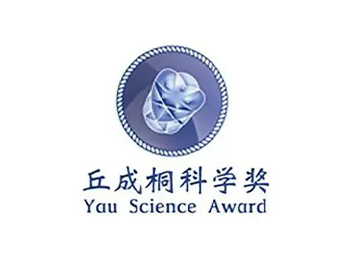Everything You Need to Know About the S.-T. Yau High School Science Award: Process, Prestige, Difficulty & Content
The S.-T. Yau High School Science Award is one of the most prestigious and influential research competitions for high school students worldwide. Launched in 2008 by the renowned mathematician Professor Shing-Tung Yau, this competition has gained widespread recognition for its rigorous evaluation process, expert judging panel, and its emphasis on nurturing students' research capabilities. This article provides a comprehensive overview of the award, covering the competition process, level of prestige, difficulty, and content—helping students and educators better understand this elite academic challenge.
1.Competition Process
The competition is systematic and structured, consisting of several key stages: registration, submission of research papers, regional reviews, and the global finals.
(1) Registration
- Mainland China Region: Registration opens from April 15 to July 31.
- Asia Region: Registration starts in February and ends on June 12.
Registration Portals:
- Mainland China: www.yau-awards.com
- Asia Region: https://yauaward-asia.hk
- North America: www.yau-science-awards.org
Eligibility: Open to high school students globally. For the Mainland China region, only high school students may participate. Each team may include 1–3 students from the same school, guided by 1–2 teacher advisors.
(2) Research Report Submission
- Mainland China Region: August 1 to September 15
- Asia Region: Research outline due by June 16; final paper due by August 14
Format Requirements: Reports must be submitted in PDF format and include a cover page, title, authors, abstract, keywords, table of contents, main text, references, and acknowledgements. Reports may be in Chinese or English. If written in Chinese, an English abstract is required. For teams advancing to the third round and beyond, an English version of the report is mandatory.
(3) Regional Reviews
- Mainland China Region: Reviews take place from October 1 to November 3. The region is divided into North and South divisions, with an additional East division for mathematics.
- Asia Region: Review results are typically announced in July.
(4) Global Finals
The global finals are usually held in December at Tsinghua University. Final presentations and defenses are conducted in English and evaluated by an international panel of judges.
Got questions? Scan the QR code below to consult with our competition advisor
2.Prestige and Recognition
The S.-T. Yau High School Science Award enjoys an outstanding reputation in both domestic and international academic circles.
(1) Academic Authority
Founded by Professor Shing-Tung Yau, one of the world’s most distinguished mathematicians, the award is judged by professors from top-tier universities worldwide. This ensures the competition maintains a high academic standard and fair evaluation. Projects are assessed based on their originality, scientific merit, rigor, and the quality of the written report.
(2) Advantage for University Admissions
Winning or even participating in this award significantly boosts a student’s academic profile. Elite universities such as Harvard and Yale pay close attention to applicants with Yau Award recognition. In China, it is included in the Ministry of Education’s official list of recognized academic competitions (2022–2025), making it one of the top high school academic contests in the country.
(3) Research Skill Development
Participants are required to choose their own topics, conduct independent research, and write a full academic paper—an invaluable process that enhances research abilities, teamwork, and problem-solving skills. Students also gain exposure to cutting-edge scientific topics and methodologies, laying a strong foundation for future research careers.
3.Difficulty Level
The S.-T. Yau High School Science Award is highly challenging for several reasons:
(1) Academic Requirements
The competition spans six core academic disciplines: Mathematics, Physics, Chemistry, Biology, Computer Science, and Economic/Financial Modeling. Participants must have a solid understanding of their chosen field. Particularly in Mathematics and Physics, theoretical depth and innovation are essential.
(2) Research Capabilities
Participants must independently develop a research question and complete an academically rigorous paper. This requires original thinking, scientific reasoning, and attention to detail throughout the research process.
(3) Intense Competition
Data from past years show extremely low award rates. For example, the gold award rate in Mathematics is just 0.003%, and the overall medal-winning rate is around 0.03%. This makes the competition one of the most selective in the world.
4.Competition Categories
The Yau Award covers a wide range of disciplines. Participants can select the subject area that best matches their interests and academic background.
(1) Mathematics Award
Covers fields such as algebra, number theory, geometry, and probability. These projects often require a strong foundation in mathematical theory, especially in algebra and number theory. Judges look for theoretical innovation and mastery of mathematical tools.
(2) Physics Award
Topics often include dynamics, fluid mechanics, and astrophysics. Projects require not only strong theoretical knowledge but also experimental design and data analysis skills. Judges emphasize originality and sound experimental methodology.
(3) Chemistry Award
Common topics include reaction mechanisms, materials science, and biochemistry. As with physics, chemistry projects must combine theoretical understanding with rigorous experimentation. Judges value scientific accuracy and the thoroughness of the experimental process.
5. Preparation Tips
To excel in the Yau Award, students should prepare carefully and strategically.
(1) Topic Selection and Planning
Choose an innovative and valuable topic aligned with your interests and strengths. A well-planned research timeline—detailing objectives, methodology, scheduling, and team responsibilities—is essential.
(2) Strong Academic Foundation
Build a solid knowledge base in your selected discipline. Review core concepts and research methods before starting. For interdisciplinary projects, divide learning responsibilities among team members to maximize collective expertise.
(3) High-Quality Research Report
Follow the official format strictly, ensuring clarity and completeness. The report should include a strong abstract, clear structure, proper citations, and acknowledgements. Make sure to run plagiarism checks and seek feedback from teachers or experts before submitting.
(4) Presentation and Defense
During the regional and final rounds, teams must give oral presentations and answer questions from the judges. Focus on clear and logical communication, highlight key findings, and prepare to answer questions thoroughly and confidently.
The S.-T. Yau High School Science Award is not just a competition—it’s a launchpad for aspiring young researchers. By understanding its structure, value, and requirements, students can prepare more effectively and rise to the challenge.





